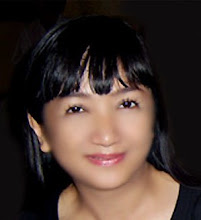
Saigon, as the city is still frequently referred to, is Vietnam's largest city with a population in excess of 6 million. It is a fast-paced city full of contrasts as street vendors selling fruit and vegetables can be seen next to glitzy western-style bars and boutiques. Saigon's history is only 300 years old, less than a third that of the capital, Hanoi. In 1859, the city was captured by the French and became the capital of Cochinchina. From 1956 until its dramatic demise in April 1975, Saigon was the capital of the US-backed Republic of Vietnam.
Today Ho Chi Minh City is very much the heart of Vietnamese business and entrepreneurs. The city's skyline is rapidly changing, reflecting the sharp influx of foreign trade within the last decade. And yet the city still retains its connections to the past, particularly in Cholon, the city's Chinatown. Here dozens of elegant temples and pagodas can be seen. The French left their mark here – as the city has many street cafes and patisseries where fresh croissants can be enjoyed with a cup of coffee.
• The Reunification Palace: This is one of the most important buildings in the city. Here on April 30, 1975, what the Vietnamese refer to as the ‘American War' officially ended when tank number 843 of the North Vietnamese Army crashed through the gates of what was, at the time, the residence of the President of the Republic of Vietnam .

• War Remnants Museum : Formerly known as the Museum of American War Crimes, this is a poignant display of the futility of war. Some of the black and white photography in the ‘Requiem' exhibit is particularly touching, dedicated to both foreign and Vietnamese journalists and photographers who perished during the conflict. The exhibit includes the last shots these photographers had taken before their deaths. The courtyard outside contains the spoils of war, namely rusting jets, tanks and cannons captured from the American military machine.

• Notre Dame Cathedral and Old Post Office : Built between 1877 and 1883 this is one of the best examples of classical French colonial architecture. Remarkably every stone used in its creation was shipped from France to Vietnam. Her two 40m towers, topped with iron spires dominate the city's skyline. The Old Post Office is another example of French colonial architecture and is also the country's largest post office.

• Giac Lam Pagoda: This is HCMC's oldest pagoda, dating back to 1744 and one of the finest in Vietnam. Inside, 98 pillars and 113 statues and myriad mini-Buddhas vie for your attention. Don't miss the amazing Tree of Wandering Souls where people pray for their sick relatives by writing the names of their loved ones on slips of paper and then attaching them to the tree.

• Cholon, including the Thien Hau Pagoda: Cholon actually means Big Market – a claim that is well justified as Vietnam's largest market, the Binh Tay, is located here. The district is home to the city's 400,000 Chinese and has many beautiful temples and pagodas.

• Ben Thanh Market: This bustling and well-organized market is very popular with tourists, primarily due to its central location. It has a wide selection of goods ranging from fake Nike shoes to beautiful silk Ao Dais.














